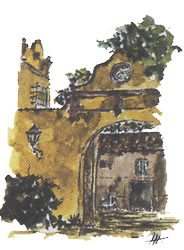EN 17914: 2025. Virucidal activity of chemical disinfectants and antiseptics. Quantitative suspension test for the evaluation of virucidal activity in the food, industrial, domestic and institutional area - Test method and requirements (Phase 2/Step 1).
Test not accredited in our laboratory.
The EN 17914 standard describes a quantitative suspension test for the evaluation of virucidal activity of chemical disinfectants and antiseptic products that form an homogeneous physically stable preparation when diluted with hard water or, in the case of ready-to-use products (i.e. products that are not diluted when applied), with water, used in the food, industrial, domestic and institutional areas by wiping, spraying, flooding and for disinfection of textile and equipment excluding those products where disinfection is medically indicated.
This document is applicable at least to the following uses: a) processing, distribution and retailing of food of animal origin: milk and milk products; meat and meat products; fish, seafood, and related products; eggs and egg products; animal feeds; etc.; food of vegetable origin: beverages; fruits, vegetables and derivatives (including sugar, distillery, etc.); flour, milling and baking; animal feeds; etc.; b) institutional and domestic areas: catering establishments; public areas; public transports; schools; nurseries; shops; sports rooms; waste containers (bins, etc.); hotels; dwellings; clinically non sensitive areas of hospitals; offices; etc.; c) industries other than food: packaging material; biotechnology (yeast, proteins, enzymes, etc.); pharmaceutical; cosmetics and toiletries; textiles; space industry, computer industry; etc.
This standard does not apply to hand disinfection and hygienic hand washing products, as this is medically indicated in most cases. For hand disinfection and hygienic hand washing products, the EN 14476 standard should be followed.
Products can only be tested at a concentration of 80 % (97 %, with a modified method for special cases) as some dilution is always produced by adding the test virus suspension and the interfering substance. Virus recommended by the standard, depending of the activity assessment required are: Adenovirus and Murine Norovirus (test for Surface disinfection food area, domestic area, institutional area, and disinfection of textile domestic area <40ºC; Vaccinia virus (test for activity against enveloped virus in any area ≤ 40ºC); or Murine Parvovirus (test for disinfection of textile). The test sample with the interfering substance is challenged with the test virus suspension and maintained at the chosen temperature (between 4ºC and 40ºC for Surface disinfection in food area, domestic area and institutional area; between 10ºC and 70ºC for textile disinfection in main wash cycle; and 10ºC to 20ºC for textile disinfection in rinse cycle), and the contact time selected (no longer than 60 min for all tests except no longer than 20 minutes for textile rinse cycle). To simulate clean conditions, the interfering substance is a 0.3 g/L bovine albumin solution, and for dirty conditions, a 3.0 g/L bovine albumin solution. The standard also allows the use of 10 g/L reconstituted milk as an interfering substance when the product is intended for dairy industry. In case of textile disinfection, clean conditions are mandatory for the rinse cycle, while dirty conditions are mandatory for the wash cycle.
After the contact the virucidal action is suppressed by a validated method and dilutions of the mixture are transferred into cell culture units using monolayers or cell suspension. Following the incubation the titres of infectivity are calculated according to Spearman and Kärber (quantal tests) to obtain the number of infective viruses using the TCID50 method to compare the difference of the virus titres without and with treatment with the product test solution. The product must be tested at a minimum of three concentrations, including one in the non-active range and one in the active range (these last two concentrations are chosen by the laboratory that performs the test because they correspond to the internal controls of the test).
Prior data generated according to EN 14476 remains valid.



